From Santander in the north of Spain we now drive fast towards the south. We pass the landscape of Castile. This landscape is interspersed with green hills and offers a varied ride. We pass many small villages and can really soak up this green and sparse landscape. Wonderful – and the curves and inclines make for interesting roads to travel. Soon we approach the region of Extremadura with its capital Mérida on this road.
Mérida is known for its archaeological sites dating back to Roman times, many of which are UNESCO World Heritage Sites.
Mérida Amphitheater
The main attraction in Mérida is the amphitheater. It joins the more famous amphitheaters from Roman antiquity. Today it has been beautifully restored to demonstrate its original dimensions and use. Moving freely around the area, we are able to get an impressive view as performers as well as spectators in the stands. Apparently, the amphitheater of Mérida is still sporadically used for theater performances.
A special feature of this amphitheater is the circus for gladiator fights, which is located in the same area. There are many information panels that give us the sense of the different passages in and out of the Circus. Among other things, dedicated entrances led the fighters into the arena. There are also smaller corridors and rooms connected to the fighting area for wild animals which, in addition to the gladiators, provided a special fighting spectacle. This part is from today’s perspective probably similarly macabre as the real fights of the gladiators who fought partly for their naked survival in front of the tiers.
The inspection of these old buildings is nevertheless very exciting and it is already a master achievement to build such buildings at that time.
01. October to 31. March: 09:30 to 18:30 clock
01. April to 30. September: 09:00 to 21:00 o’clock
Admission: 12€/adults, 6€/children, pensioners, students
If you would like to visit more than one of the historic sites, the Combi-Ticket is already worthwhile from the second sight! The Combi-Ticket costs 15€/adult resp. 7.50€/reduced and includes the following sights: Theater, Amphitheater, Alcazaba, Casa del Mitreo, Centro de Interpretación and Crypt of the Basilica Santa Eulalia, the Roman Circus and the burial area Columbarios.
You can get the combined ticket at any official ticket office of the individual sights.
Museo Nacional de Arte Romano
The Museo Nacional de Arte Romano is located right next to the amphitheater, where the pedestrian zone of the city begins. The museum houses finds from the Roman period, from vases to wall mosaics to busts and much more. Much of it directly from Mérida and the surrounding area. For Mimi, however, the building itself is at least as interesting as the exhibition. The building was designed by the famous Spanish architect Rafael Moneo and is very impressive with its high brick arches.
Anyone interested in Roman culture and/or architecture should definitely make a trip to the museum.
01. October to 31 March: 09:30 to 18:30
01. April to 30 September: 09:00 to 20:00
Admission: 3€/adults, 1.50€/children, pensioners, students
City center of Mérida
Right next to the amphitheater and the museum is the present-day city center of Mérida. The first street just around the corner still exudes real Roman flair. However, it is probably mainly due to tourism. A distinctive historical old town like in other cities we do not find in Mérida. However, there are many historical buildings scattered around the city. We visit them comfortably on foot, the distances are not very far.
Acueducto de los Milagros
Today there is a park at the foot of the aqueduct. From this area we can see the remains of the original aqueduct. It was part of the ancient water distribution system of the Romans. From today’s point of view, an achievement at that time. It led into the city from the Lago de Proserpina, a historic artificial reservoir, about 5km away.
By chance, we spent the last two nights at this very lake. Contrary to the common image of reservoirs, it is a small, branched lake with a diverse fauna of various bird species and aquatic animals.
With this experience in mind, it is even more amazing how long such aqueducts transported water for water supply in those days.
Since the aqueduct is located in a public park, you can visit it for free around the clock. And as a bonus, countless pairs of storks nest on the aqueduct. Everywhere you can admire the huge nests with the elegant birds inside and especially hear them, as they clatter their beaks quite loudly.
Templo de Diana
The Temple of Diana was built in the 1st century A.D. and today it is the only Roman religious building that has been preserved in an acceptable state of conservation in Mérida. It is located in the center of the city, so we can easily visit it during our walk through Mérida. The front area with the typical Roman columns is freely accessible and there is no entrance fee. The back area is accessible by a swinging staircase and charges admission, but during our visit there was a poster stating that the exhibit is closed until further notice.
Puento Romano
Literally translated, Puento Romano means roman bridge. It is still preserved as a pedestrian bridge and stretches over the river Guadiana in a length of about 750m. The approximate length is due to the fact that historically it was probably shorter, but due to the many changes over time it was sometimes added to and otherwise altered. With this length, this bridge is today the longest bridge preserved from antiquity.
Alcazaba of Mérida
The next sight is an old Muslim castle from the 9th century. Well, how come there are so many Roman buildings facing a Muslim castle? The past times in Mérida were turbulent and so were the historical findings. Different forces defended the region against each other and were sometimes defeated. Thus, the Alcazaba was partly built on existing Roman structures. Partly the raw materials of Roman buildings were reused for the construction of the thick fortification walls and towers.
The Alcazaba of Mérida is externally well preserved and restored with the fortification wall. Inside, however, it is more of an issuing site which exhibits the finds partly at their place of discovery. So, this visit was not as impressive as the visit to the amphitheater, but still worth the visit. In addition, the view from the fortification wall over the river Guadiana and the Roman bridge is very beautiful. This perspective almost puts us in a Middle Eastern atmosphere with the sandy stones and the contrast of green palm trees.
01. October to 31 March: 09:30 to 18:30
01. April to 30 September: 09:00 to 21:00
Admission: 6€/adults, 3€/children, pensioners, students
If you would like to visit more than one of the historic sites, the Combi-Ticket is already worthwhile from the second sight! The Combi-Ticket costs 15€/adult resp. 7.50€/reduced and includes the following sights: Theater, Amphitheater, Alcazaba, Casa del Mitreo, Centro de Interpretación and Crypt of the Basilica Santa Eulalia, the Roman Circus and the burial area Columbarios.
You can get the combined ticket at any official ticket office of the individual sights.
Circus Maximus
A little bit outside but still comfortable on foot we reach the Circus Maximus. It is an old horse racing track that also dates back to the Romans. First, we have a look at the area. The dimensions are really big. It was the largest circus of the time of ancient Rome. Accordingly, it covers an area of 600m x 140m. At the entrance to this sight there is also a visitor platform on the roof of the visitor center. From this, the impression is more tangible. This gives a better view of the remains of the racecourse and the spectator stands. However, the seating tiers have not been as well restored as the amphitheater, and in places it looks more like overgrown walls.
01. October to 31 March: 09:30 to 19:30
01. April to 30 September: 09:00 to 21:00
Admission: 6€/adults, 3€/children, pensioners, students
If you would like to visit more than one of the historic sites, the Combi-Ticket is already worthwhile from the second sight! The Combi-Ticket costs 15€/adult resp. 7.50€/reduced and includes the following sights: Theater, Amphitheater, Alcazaba, Casa del Mitreo, Centro de Interpretación and Crypt of the Basilica Santa Eulalia, the Roman Circus and the burial area Columbarios.
You can get the combined ticket at any official ticket office of the individual sights.
We liked Mérida very much. There are plenty of sights and due to the constant stream of visitors, the tourist infrastructure is also well developed. Therefore, we get to enjoy a super vegetarian restaurant and that in Spain! If you are also looking for such a restaurant in Mérida, we can highly recommend Restaurante Shangri La!
We really liked the different historical sites, but in retrospect we wouldn’t start with the amphitheater, the amphitheater is definitely the highlight and after that the other sites didn’t always stand up to comparison.

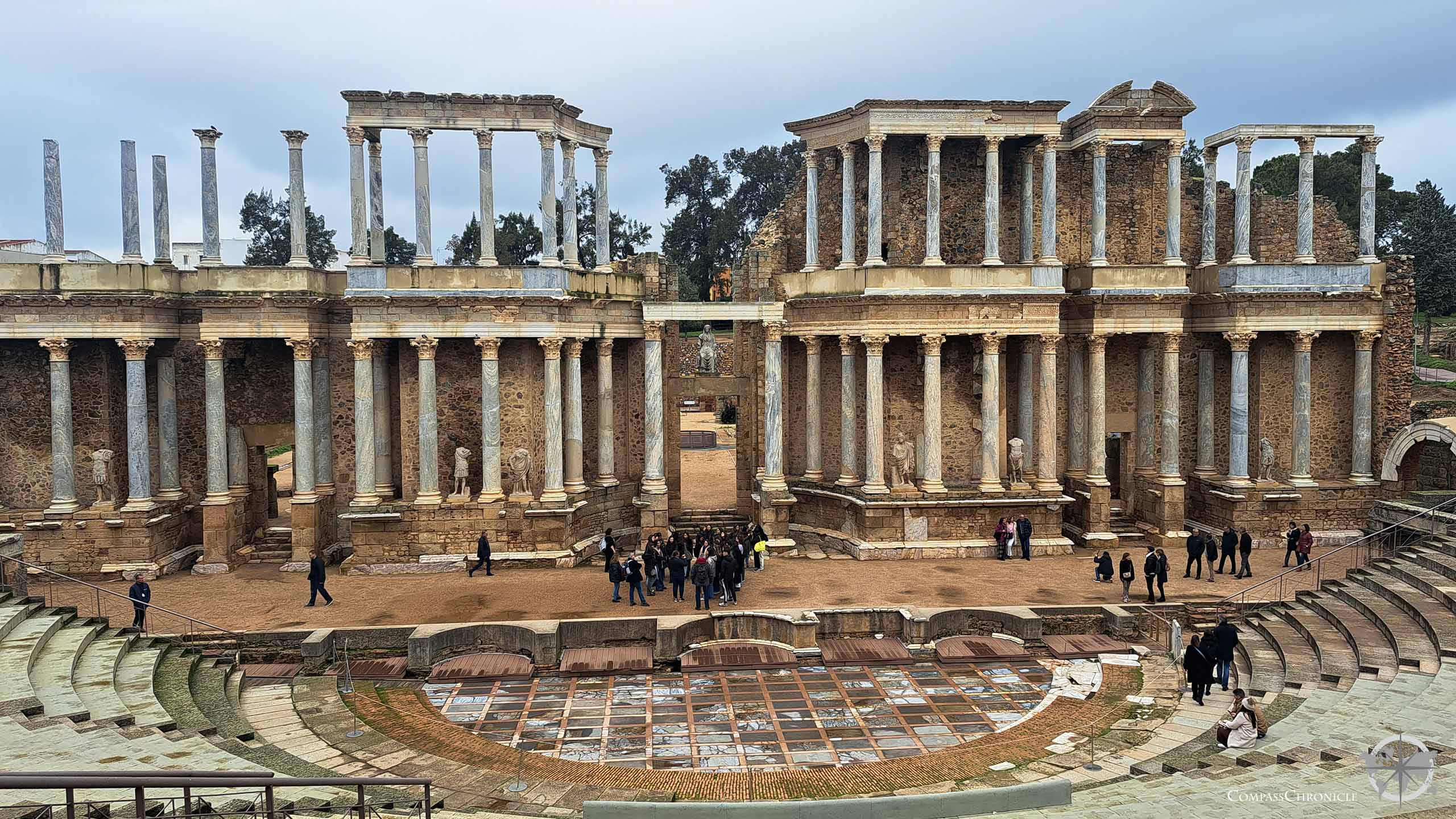


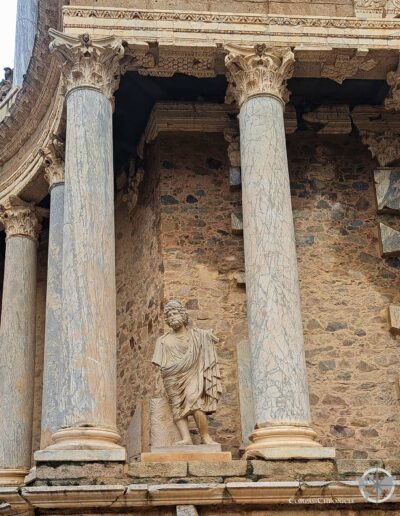

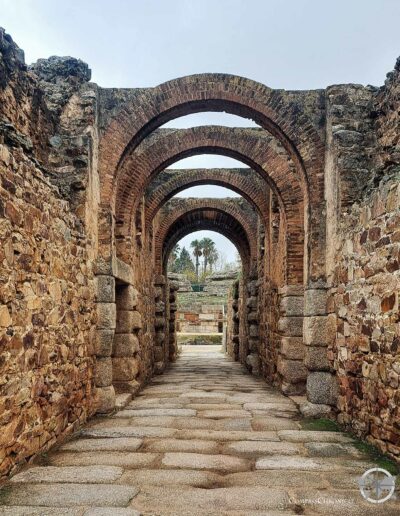

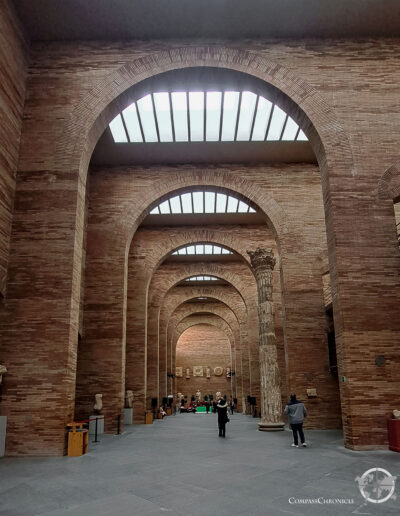
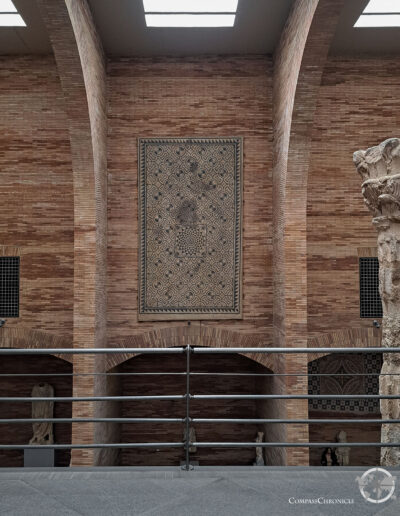

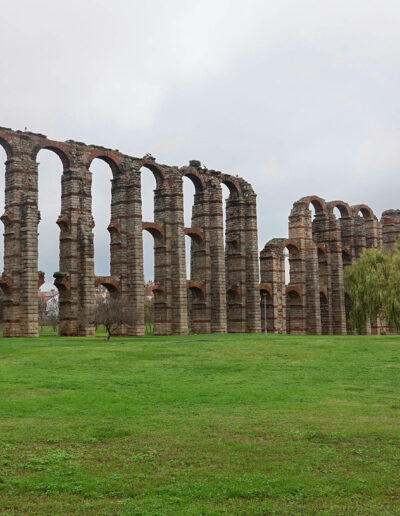
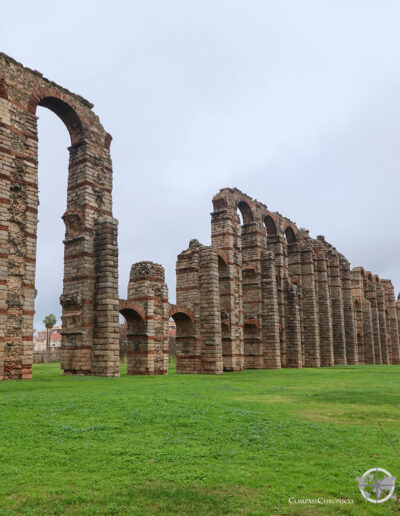

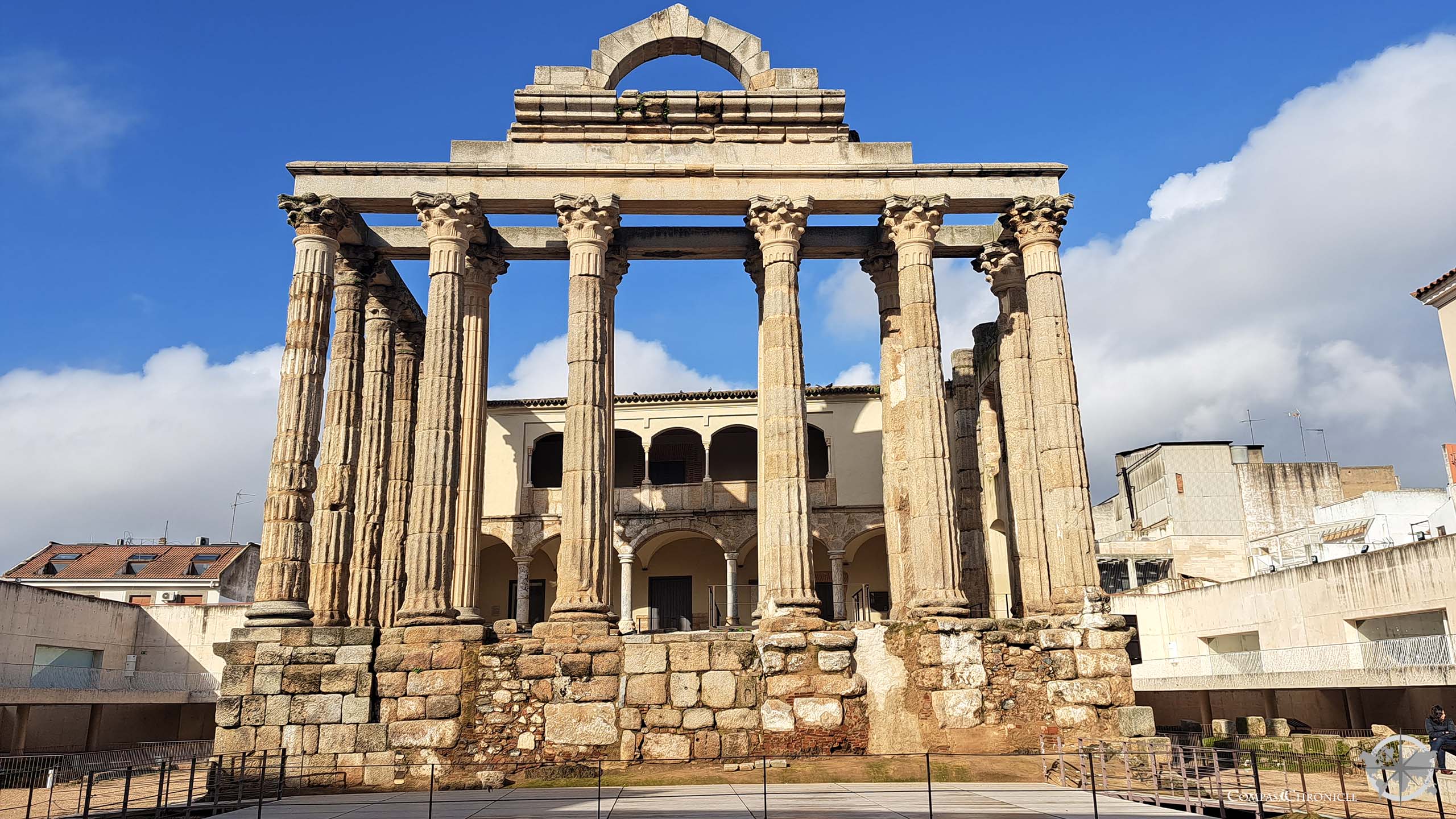
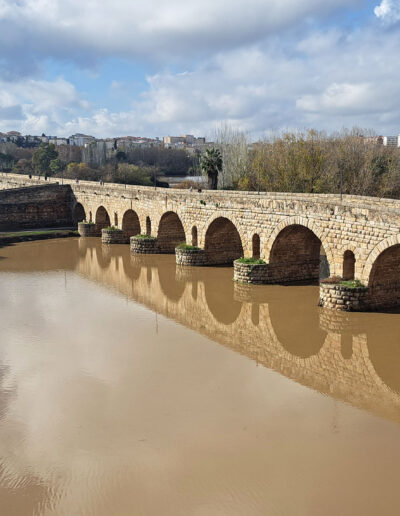
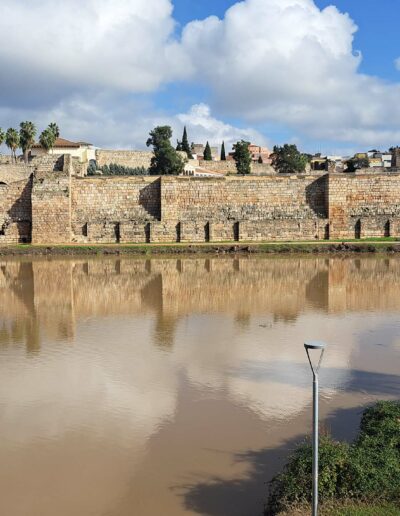

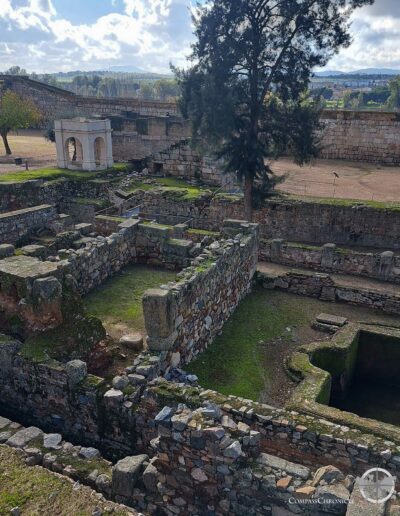



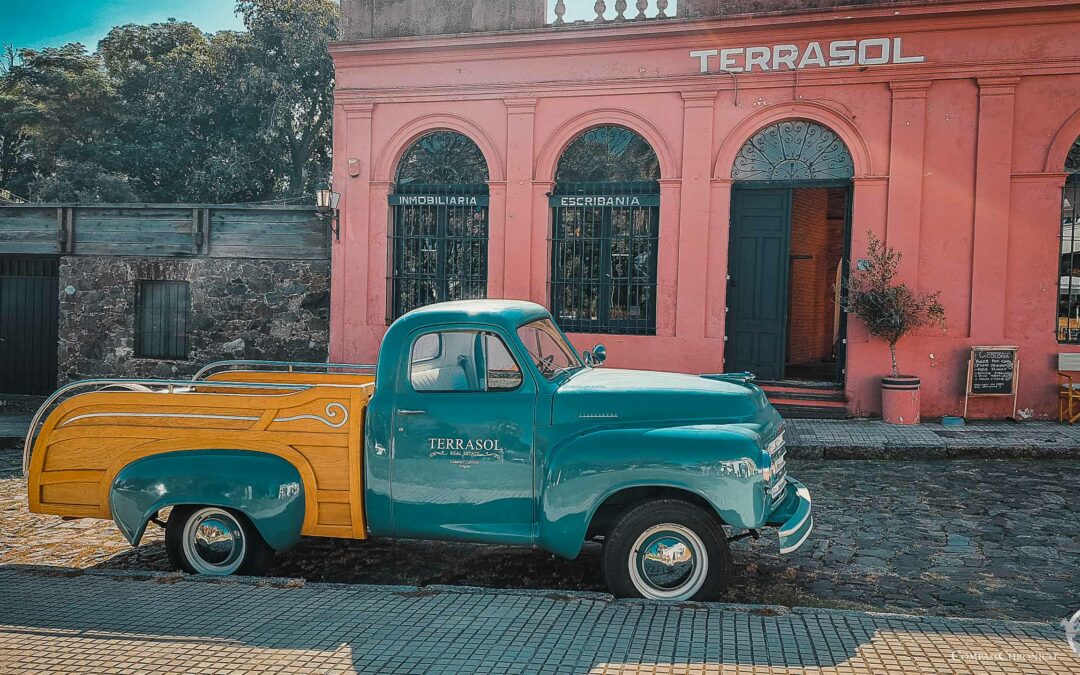
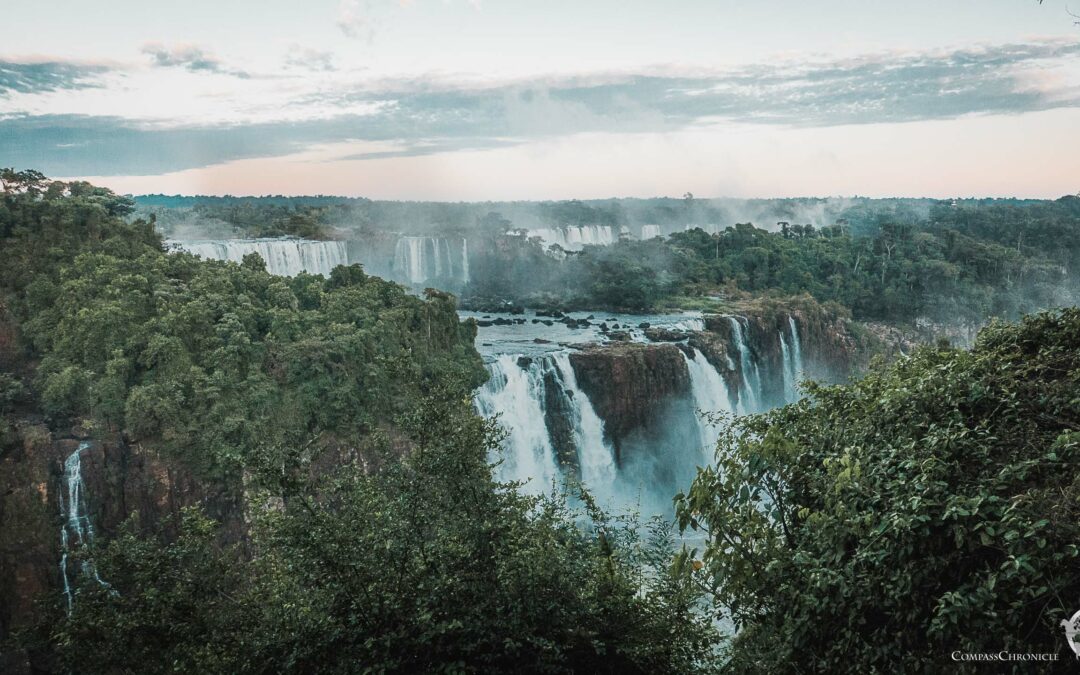
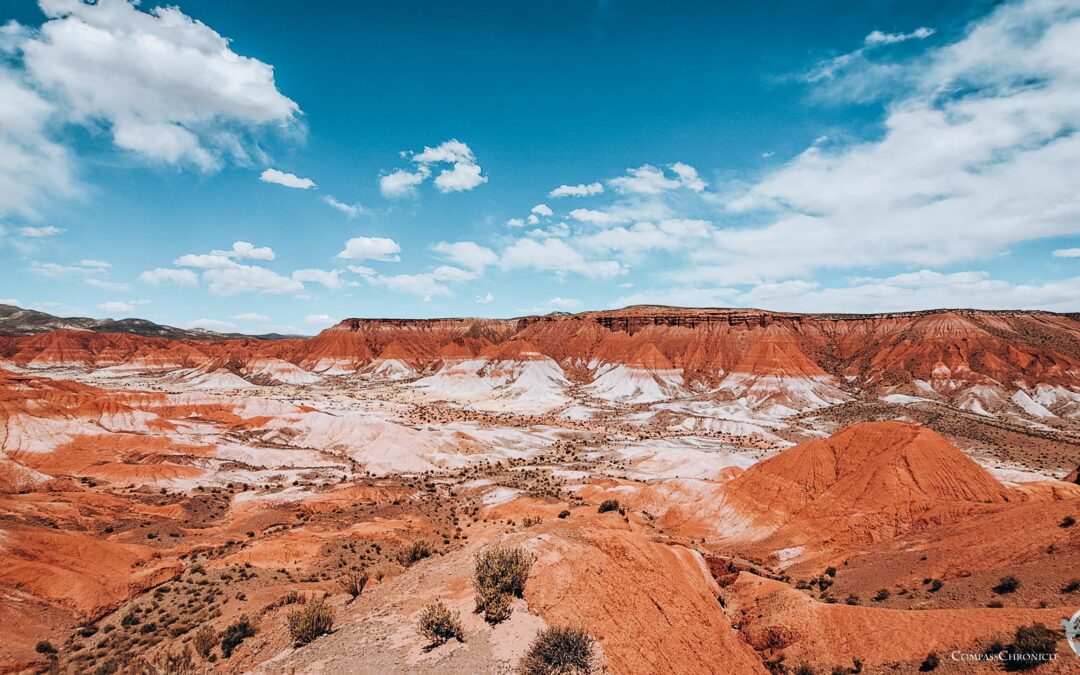
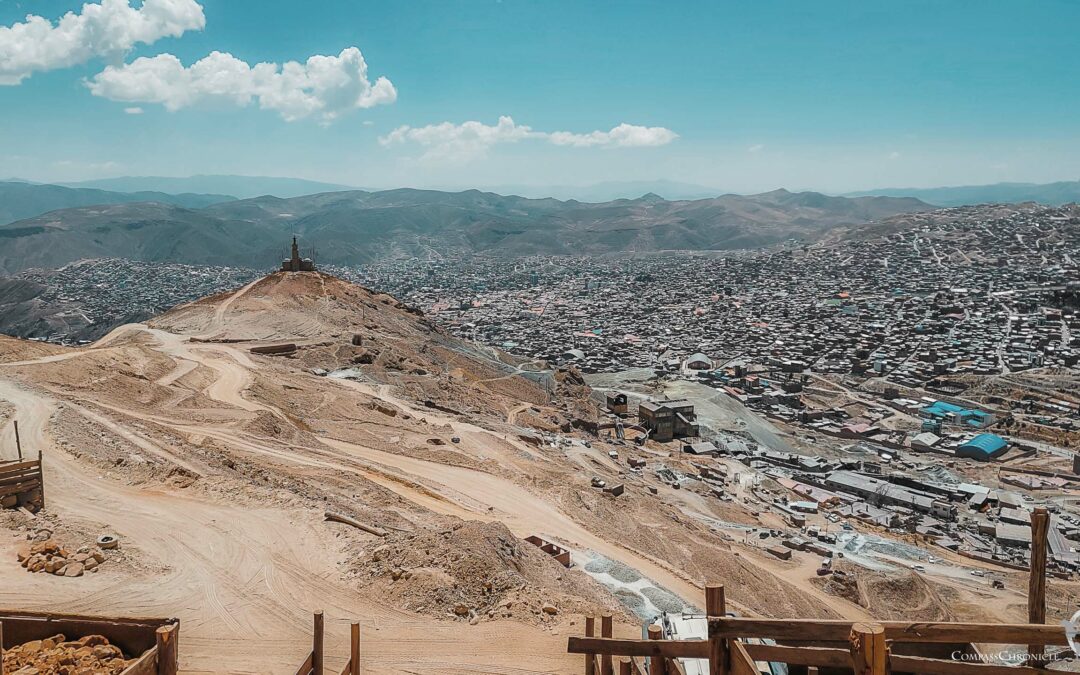

0 Comments